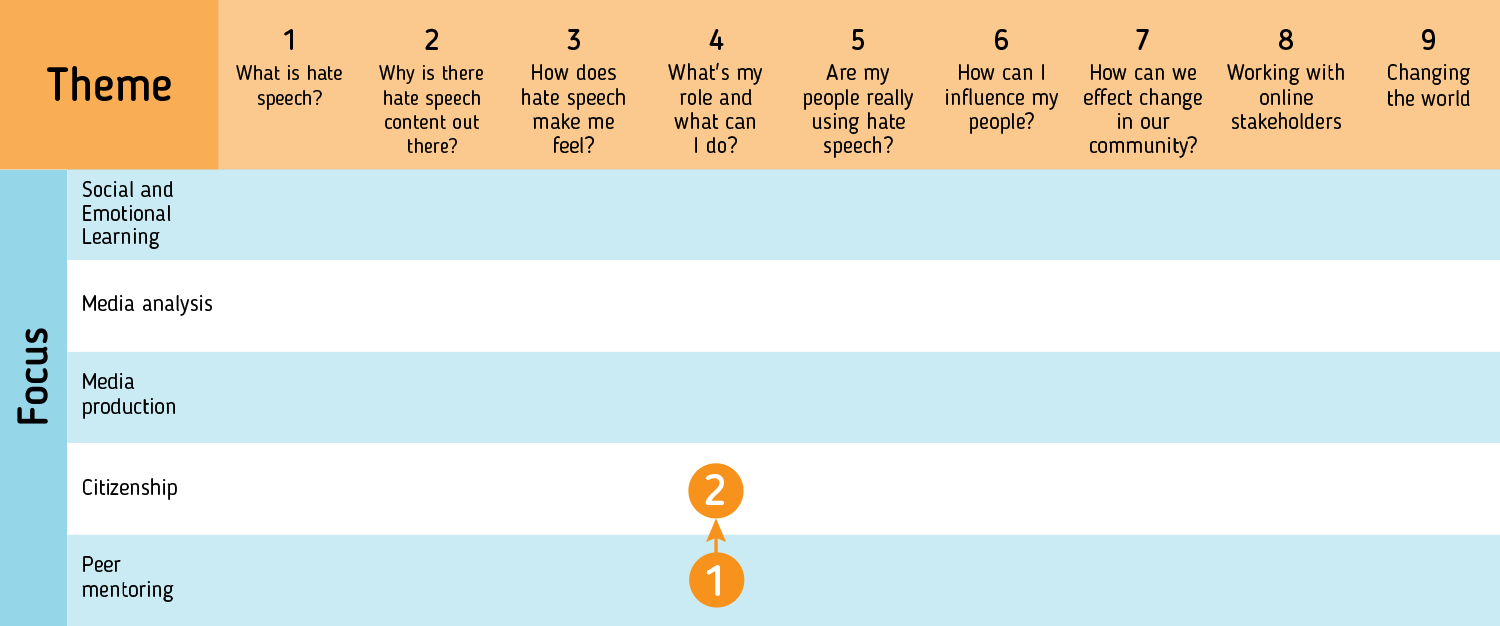Pathway 2: What´s my role and what can I do?
In this section, we suggest a possible pathway you can work through when putting SELMA into practice as part of a peer mentoring scheme. Please note that this is by no means restrictive; SELMA has been designed as an open and flexible framework which you can adapt to the needs, level and interests of the group(s) you work with. The SELMA journey articulated below has been developed for illustrative purposes, to give you a suggested ‘way in’ to the toolkit if you’re not sure where to start. However, we would certainly encourage you to explore the toolkit and use it creatively!

After ensuring that young people are clear about the definition of hate speech, begin with the ‘Theme 4’ activities in the ‘Peer Mentoring’ focus. If you have time, we’d suggest starting with the first activity, designed to get young people thinking about the ways we respond to hate speech on a societal level. The platform dilemma encourages young people to think about what has been described as ‘freedom of speech vs freedom of reach’, and immediately draws their attention to the wider social implications of hate speech. Next, run the second activity, which encourages young people to consider their different options for reacting when witnessing hate speech online. Considering the range of options at their disposal builds a sense of agency whilst also alerting young people to the risks of direct engagement with hateful content, inviting them to consider a fuller range of ways to safely respond.
Once you have completed the activities in the ‘Peer Mentoring’ focus, move on to the ‘Citizenship’ focus. Begin with the ‘Questions to ask’ as prompts for discussion before launching into the main activity. The main activity builds on the lessons learnt in the ‘Peer Mentoring’ activity, inviting young people to create memes and in the process consider the ways that humour can be marshalled to respond to hate.
